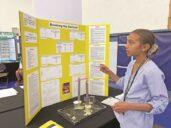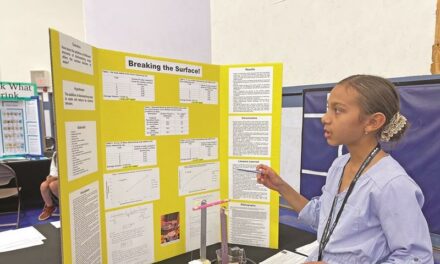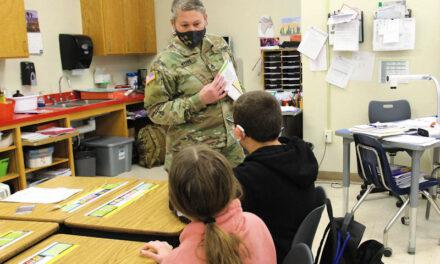Two groups of New Mexico Tech students and alumni were treated to behind-the-scenes tours Oct. 13, at Magdalena Ridge Observatory (MRO), home to the MRO Interferometer and the 2.4-meter Telescope.
Included in the annual four-day 49ers Celebration, the tours were aimed at giving students and alumni a chance to learn more about key research facilities affiliated with the university.
Van Romero, physics professor and director of Tech’s Space Science Program, described for the tour participants how the telescopes at the MRO use mirrors and their special shapes to collect light to make dim things bright and small things large.
The larger the telescope’s diameter, the better its resolution. Romero said another telescope will be added to the MRO in December, with more to come in each of the next eight years, depending on Congressional funding.
The MRO Interferometer collects light at four stations using delay lines that run inside and outside the facility’s walls. It is primarily used to detect motion in distant galaxies.
Eventually, these telescopes will make movies of the universe, according to Romero, because the universe is expanding and picking up speed.
The 2.4-meter telescope is primarily used for collecting data and making dim things bright and for tracking near-Earth objects, such as satellites, spacecraft and asteroids. MRO scientists categorize asteroids and determine what they are made of.
They also play a key role in keeping an eye on asteroids, especially those that might someday be headed toward the Earth.
The tour groups received an update on how researchers and technicians at the MRO are making significant contributions to a planetary defense mission. NASA intentionally crashed a spacecraft into the asteroid Dimorphos on Sept. 26.
The 2.4-Meter Telescope continues to capture images of the asteroid’s light trail for NASA’s Double Asteroid Redirection Test Mission.
The direct impact from the NASA spacecraft knocked the asteroid off its orbit and shortened it by about 32 minutes according to Paul Loskamp, maintenance technician for the 2.4-meter telescope.
“We actually did change the orbit of the asteroid,” he said. “It was successful.”
While the telescopes are involved in scientific research, Romero said they are also available for students to make astronomical observations and discoveries.
The MRO sits on 1,000 acres in the Magdalena Mountains at an elevation of 10,600 feet, the fourth-highest observatory under some of the darkest skies in the world.






















